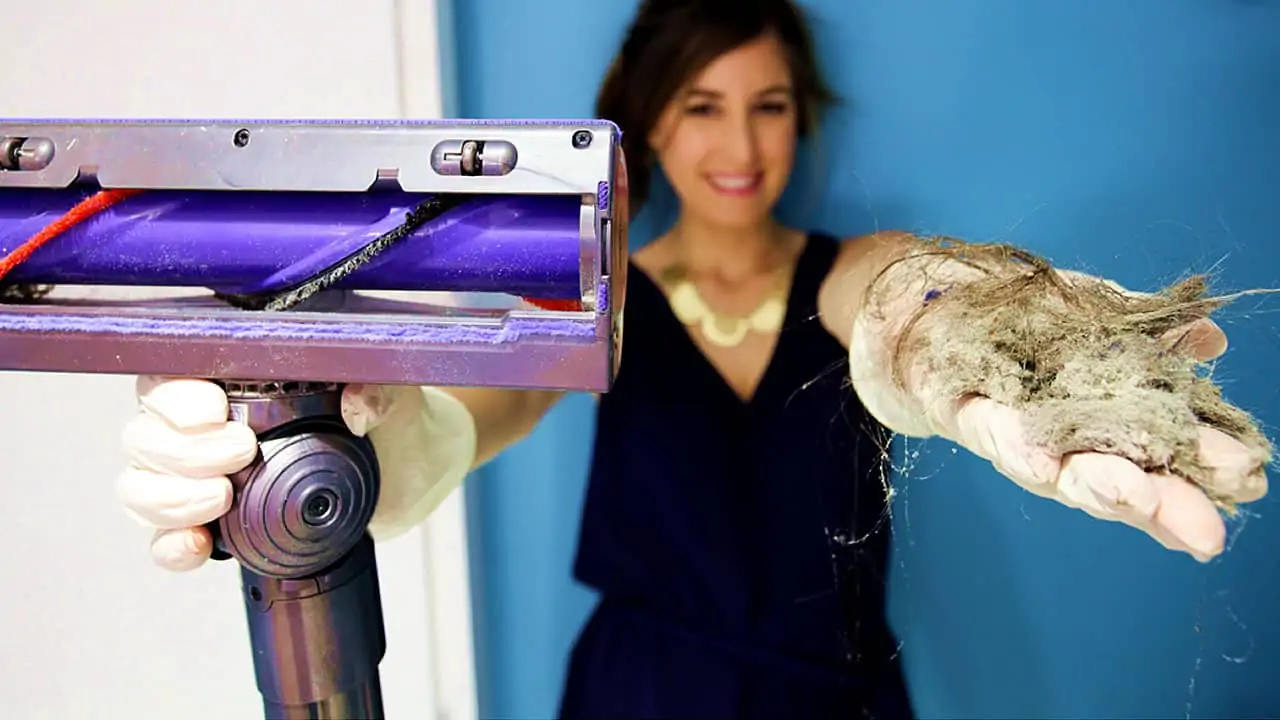Vacuums are so sensitive <rolls eyes>. They look all burly and rugged on the exterior, but inside, they’re delicate little creatures that need to be treated with the most tender loving care. If not, they’ll blow out dust, overheat, lose suction, make you work harder and eventually, just stop working. So if your vacuum is clogged, here’s what you can do to fix it. And remember, if your vacuum is acting up or the clog is beyond your comfort zone, just take it in to get repaired. You don’t have to be great at everything.
Vacuum issues can be almost always be prevented by two things:
- Vacuuming with an empty canister or bag
- Not vacuuming up anything large (clog), wet (will kill the vacuum) or tiny (e.g. drywall dust with a non-Shop Vac)
So what have we learned so far? First, always check the canister or bag before you start vacuuming and empty it if it is half (canister) or full (bag). When full, it cannot suction as well, heats the motor up faster (which can cause it to burn out), and will make you work harder. If you sense a funny smell coming from the vacuum, that means it is time to empty it. Second, avoid a clog before it happens by visually inspecting the floor first and remove any large items such as paper clips, coins, small toys, socks, etc. before firing up the ol’ dust eater.
Help! The vacuum is clogged!
If there is a clog in the vacuum, you won’t have good suction and the vacuum won’t work. The clog can be in the vacuum head, the hose or where the hose meets the actual vacuum.
Step 1: Unplug the vacuum.
Step 2: Find out where the clog is.
- to see if it is in the head, turn it upright and visually inspect.
- To see if it is in the hose, unclip the vacuum hose from the attachment and the vacuum itself. Hold the hose upright and drop something small down the hose, like a coin. If the coin falls through to the ground, you know the hose is clear. If not, there’s your answer.
- To see if it is in the actual vacuum (you may want to wear a glove for this), poke your finger in the area where the vacuum meets the hose; this is often where clogs are.
Step 3: Fix the clog.
- To fix a clog in the head, flip it over and look inside. Use your fingers to physically pull out the clog, or the dull end of a thin tool (like a screwdriver), to push it out. Allow clog to fall and manually discard of the material. You may also need to disassemble the brush head to do this. Consult your user manual to do this.
- To fix a clog in the hose, feed one end into a garbage bag, and poke the other end with the back of a mop pole, until you push the clog material out into the garbage bag.
- To fix a clog in the vacuum, whether it is a canister or bag, use your finger to feel for a clog. Pull as much of it out as you can and discard. You can use a small tool, like an industrial pipe cleaner, to pull out the remainder of the clog, if needed. If the model is a bagged model, remove the bag and see if anything is hanging out of the part of the nozzle and manually remove that. Replace with a new bag.
Step 4: Test the vacuum.
- Put the vacuum back together properly and plug it in Test it to see if it works better. This should take care of the clog. If it does not, you may need to take it in for repair.
A few notes on vacuum clogs:
- Do not do anything that you are not comfortable doing, you don’t want to risk breaking a part of the vacuum or hurting yourself.
- A vacuum should come apart with relative ease; if you push, pull or twist something with excessive force, you will break it. If you feel like you have to force something to get it to budge, you’re not doing it correctly. Stop immediately and try another way, vacuum repairs are costly and inconvenient.
- Remember, the clog itself may be an important item (oh! There’s my engagement ring!), so if you can, check it before you discard of it.
Since we’re talking about vacuums, here are two other issues related to vacuum clogs that I get asked about often.
Why is the vacuum is blowing out really hot air or smoke?
STOP VACUUMING. This means the vacuum is overheating and there may be an electrical issue at worst (fire), or the motor has burned out. If there is a fire, call 911 immediately and get yourself to safety. You’ll need to take the vacuum in for a new motor if the motor has burned out. See above to learn how to not burn out your motor (it’s easy).
Why is the vacuum is blowing dusty air out of the back?
Simple: the bag or canister is full and the vacuum has nowhere to store the dust it is collecting. Empty the canister or bag. If that doesn’t fix it, the vacuum filter needs to be cleaned or changed. Many vacuums have washable filters; remove the filter, rinse well under cool water and allow to dry for 24 hours before replacing.
I hope this has helped solve your vacuum challenge. To see how I clean and care for my vacuum, check this out!
Looking for a BETTER & EASIER Way to Clean Your Home?
Cleaning Expert Melissa Maker is here to help with her game-changing 3 Wave Cleaning System that will help you clean your house faster and easier than you ever thought possible!


















Although my vacuum has suction , but nothing goes in the canister. Where is the problem and how I can solve it ? I have cleaned everything. Filters etc
Hi Riz, it sounds like you need to call your vacuum’s manufacturer.
I would like to buy it. May I know how it works? That’s a great article after reading it I thought of going to buy it.
If you’re looking to purchase a new vacuum, we love Dyson vacuums!
Vacuums are really sensitive.
Your website is amazing for finding helpful contain and the Vaccum clog article is Awsome thanks for the informative contain.
Thanks for reading Jaymin!
Useful resource for vacuuming. Thanks for sharing..
Agreed, vacuums are so sensitive. 😅
Is there anything you can spray in the hose to prevent clogging? I don’t seem to have an issue with large items. Just the dust builds up and starts collecting hair until it balls up eventually
my blockasge is in thepart of thehose that attaches into the vac the vac has suction but it is the first piece of hose that attaches directly into the vac that when i attach it to vac no suctin at all
If the vacuum is sparking, smoking or has actual flames — simply unplug it. If the flames continue, call 911 and use a fire extinguisher. Or carry the vacuum outside if you can do it safely. Call to cancel the 911 call if the the threat is mitigated.
My hose is curved at both ends (Sears) and I can’t get a pole through it. What should I do? There is air coming through but not the intensity which put had before.
This helps a lot! Thanks a ton!
I wish the vaccum cleaner hose itself was see through. Would be so much easier to see where the clog is! And to be honest, if large, medium or tiny things are a problem in clogging up the cleaner, then maybe someone needs to redesign the cleaners to prevent any clogging.
I use a narrow metal pole to check if the hose is clogged. Its very annoying doing this every ten to 15 minutes or so.
I suspect that if could all afford a Dyson vacuum cleaner, our problems like this might be solved, but I sure can’t afford one!
Can you discuss the best way to mop carpets and remove stains?
Hi Ligia! You can find my recipe for removing stains from carpets here: https://cleanmyspace.com/carpet-stain-remover/
Hope it helps!